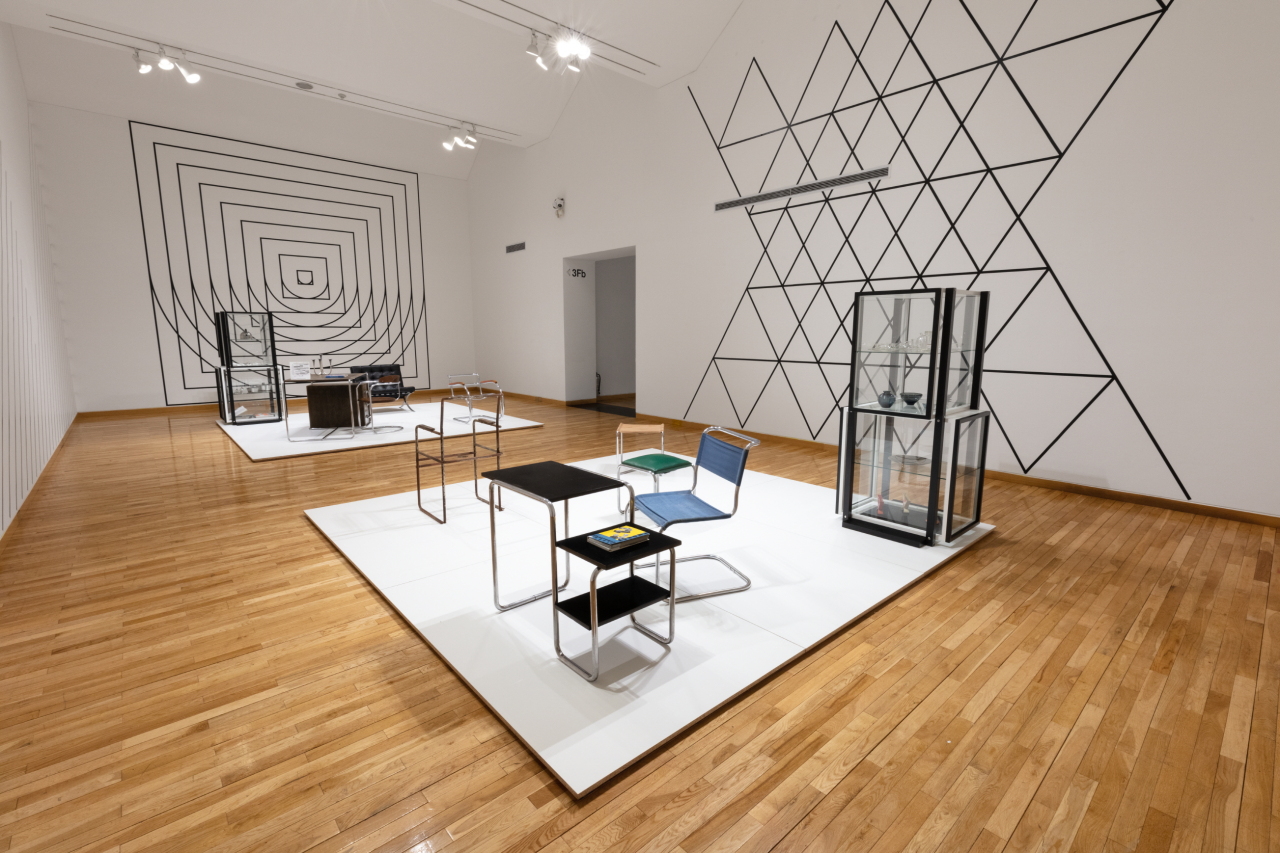Le Corbusier, who was one of the French responses to the Bauhaus school, used to experiment with furniture with his colleagues at his studio to come up with pieces that would fit in well with his architectural works.
On view at the Kumho Museum of Art in Seoul’s ongoing exhibition is Charlotte Perriand’s 1952 kitchen module that was installed in Unite d’Habitation in Marseille, a landmark apartment building by Le Corbusier.
On view at the Kumho Museum of Art in Seoul’s ongoing exhibition is Charlotte Perriand’s 1952 kitchen module that was installed in Unite d’Habitation in Marseille, a landmark apartment building by Le Corbusier.

The kitchen by Perriand provides visitors a glimpse into the interior of the monumental building designed by the architect who maintained close ties with the Bauhaus movement.
Under the title “Bauhaus and Modern Life,” the Kumho Museum of Art is showing 120 objects designed by Bauhaus school associates and designers who subsequently embraced the school’s principles. The works range from furniture to napkin holders and teapots, designed by famous architects and designers, including Gropius, Mies van der Rohe and Marcel Breuer.
Founded in 1919 in Germany by acclaimed architect Walter Gropius, Bauhaus was a place that stressed practical skills, crafts, techniques and theoretical knowledge for artists and designers.
Bauhaus school, which is often perceived as a style or a school of thought, was one of the first to emphasize pragmatic and functional approaches to design that make it accessible to the public. The school closed in 1933 because of political pressure in the nation, but its principles continued to remain popular around the globe.
Yet exhibitions and other programs related to the international design movement largely have fallen short in Korea, according to the museum. Locals are more likely to learn about the Bauhaus school from the US or Japan, which have museums and galleries that hold much broader collections of its works.
“The exhibition will provide opportunities to visitors to look into the design renovations and heritage that 20th-century modern masters left to us,” curator Kim Hee-won said.
The exhibition’s works are largely from the museum’s collection that it started to gather as part of efforts to diversify the collection, the curator added.
On the second floor, the museum shows different types of furniture pieces, including Breuer’s tables and chairs that utilized tubular steel, which boasts a minimalist aesthetic expressed through seamless bent steel tubes. Another room on the floor has different kinds of lamps, including Marianne Brandt’s famous table lamp, along with Wilhelm Wagenfeld’s “Kubus” stacking containers designed in 1938.
Shown also on the second floor are Wagenfeld’s 1929 kettle and a set of flatware, inside Marcel Breuer’s glass cabinet, a piece originally designed in 1925 and reproduced in 2008.
The basement has furniture pieces for children, such as Charles & Ray Eames’s 1940 wooden chair and table and the children’s living system model “Rappelkiste,” designed by Luigi Colani.
Perriand’s a 1952 kitchen module is also shown together with archival materials for the Weissenhof Estate, a housing estate built for the Deutscher Werkbund exhibition in Stuttgart in 1927 that included 21 buildings by renowned European architects like Mies van der Rohe, Le Corbusier and Gropius.
The exhibit runs through Feb. 2.
By Shim Woo-hyun (ws@heraldcorp.com)







![[KH Explains] How should Korea adjust its trade defenses against Chinese EVs?](http://res.heraldm.com/phpwas/restmb_idxmake.php?idx=644&simg=/content/image/2024/04/15/20240415050562_0.jpg&u=20240415144419)












![[Today’s K-pop] Stray Kids to return soon: report](http://res.heraldm.com/phpwas/restmb_idxmake.php?idx=642&simg=/content/image/2024/04/16/20240416050713_0.jpg&u=)